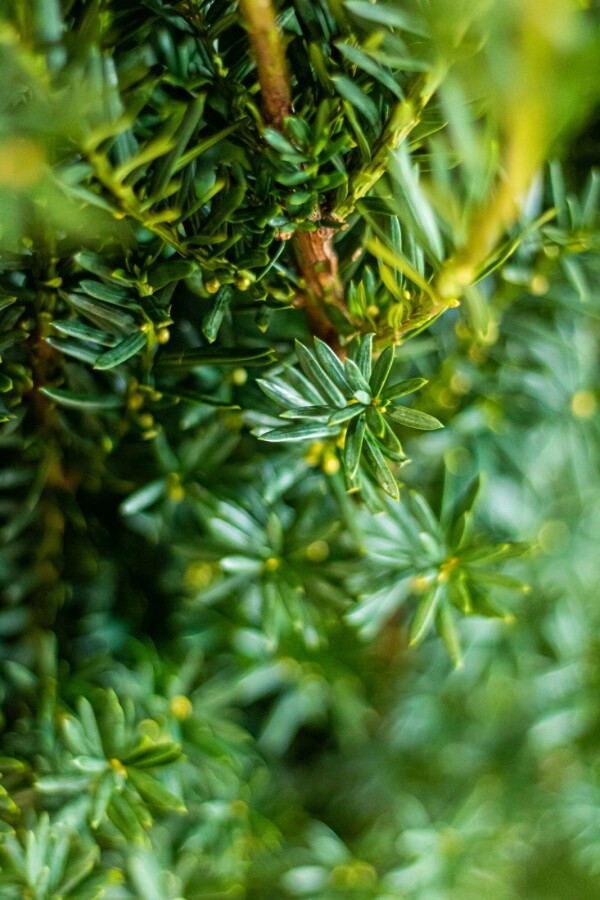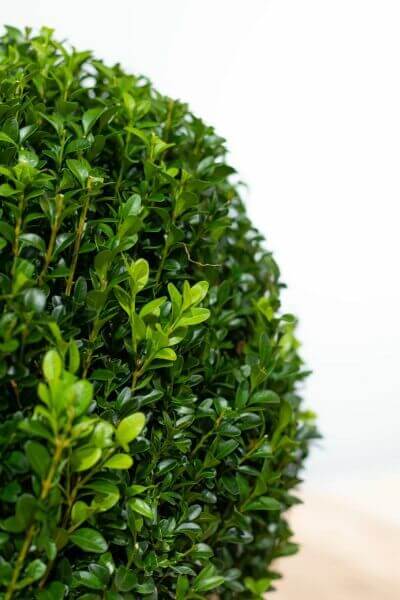Hedge Plants For Formal Landscaping
Hedge Plants For Formal Landscaping
Blog Article
Hedging Plants For All Year Interest
Improve your garden's attraction with lavish hedge ranges such as Yew (Taxus), Thuja, Laurel, Photinia, and Bamboo, commemorated for their structural integrity and environmental advantages.
Yew and Thuja supply evergreen coverage and winter strength, while Laurel offers fast development and broad, fragrant leaves.
Photinia includes seasonal beauty with its vibrant red foliage, and Bamboo provides a low-maintenance, tranquil ambiance.
These hedges enhance air quality, lower noise, and produce tranquil, personal areas.
Proper planting, spacing, and maintenance make sure energetic growth and environmental consistency.
Check out how these lush varieties can elevate your garden's appeal and wellness.
Key Takeaways
Transform Your Garden With Lush Hedge Varieties
- Select Yew for its dense, evergreen development and unequaled longevity.
- Opt for Laurel for its fast development and broad leaves, ensuring quick privacy.
- Select Photinia for its vibrant seasonal foliage, which turns a striking dark red.
- Use Bamboo for a low-maintenance, winter-hardy hedge with visual appeal.
- Space plants 2-3 per meter and prune routinely for optimum growth and health.
Popular Hedge Plants
When transforming a garden with lavish hedge ranges, it's necessary to consider popular hedge plants such as Yew, Thuja, Laurel, and Photinia due to their distinct attributes and advantages.
Yew (Taxus) is highly esteemed for its durability and thick, green growth, making it a prime option for sustaining landscapes.
Thuja is kept in mind for its evergreen foliage and robust winter resilience.
Photinia includes seasonal vibrancy with red leaves that darken gradually, producing dynamic visual appeal.
Laurel uses fast growth and aromatic, broad leaves, suitable for fast privacy.
Additionally, Bamboo is an exceptional option for ambiance, using a low-maintenance, winter-hardy choice that enhances the garden's visual with its stylish, swaying walking canes.
These selections deal with a variety of horticultural requirements and preferences.
Advantages of Garden Hedges
Garden hedges provide a multitude of advantages, making them a valuable addition to any landscape. These natural barriers are cost-effective to execute and provide considerable wind defense, enhancing air blood circulation and contributing to sound decrease. The dense foliage of hedges like Thuja and Beech makes sure personal privacy by obstructing exposure, developing a serene and remote environment.
Hedges likewise play a crucial role in microclimate guideline, providing a stable environment that cultivates plant development and minimizes temperature variations. Their detailed leaf structures filter pollutants, improving air quality and adding to a much healthier garden ecosystem.
Moreover, hedges master sound decrease, soaking up and deflecting sound waves to lower ambient sound levels. This double performance of providing both visual and acoustic personal privacy boosts the total harmony and visual appeal of any garden.
Planting and Upkeep Tips
For an effective hedge, careful preparation of the planting location is vital. Ensure the soil has proper pH and drainage to support strong root development.
Space the plants properly for the picked types. Water the hedge regularly throughout its preliminary growth stage, adjusting as needed with seasonal changes.
Implement a systematic pest control and disease avoidance method, utilizing organic or chemical treatments when necessary. Frequently examine for aphids, mites, and fungal infections.
Apply mulch to retain moisture and reduce weeds. Seasonal pruning promotes dense growth and air circulation, necessary for plant health.
Following these standards will help you cultivate a vibrant, properly maintained hedge that improves the charm of your garden.
Spacing and Trimming Standards
Spacing and Cutting Guidelines
Correct spacing and cutting are essential for cultivating healthy, aesthetically appealing hedges. Sufficient spacing ensures each plant receives sufficient nutrients, light, and air flow.
Follow these guidelines for optimal hedge upkeep:
- Spacing: Position hedge plants 2-3 plants per meter to encourage robust development.
- Pruning Methods: Routine pruning is vital for preserving desired hedge height and shape. Cut new development in summertime and cut back older wood throughout winter.
- Seasonal Care: Change trimming schedules and methods according to seasonal requirements to ensure plant health.
- Hedge Height: Frequently monitor and cut to maintain the wanted hedge height and achieve uniform aesthetic appeals.
Complying with these steps will guarantee your hedge flourishes, boosting both the appeal and functionality of your garden.
Choosing the Right Hedge
Selecting the Right Hedge
Picking the suitable here hedge includes evaluating elements such as fully grown height, foliage density, and environmental resilience. Effective hedge plant choice requires understanding each species' development characteristics and site-specific versatility.
For instance, Yew (Taxus) uses excellent longevity and dense development, while Thuja is significant for its winter season strength. Additionally, considering maintenance requirements is important; fast-growing types like Laurel or Privet need routine cutting, whereas low-maintenance options like Bamboo or Ivy might be more suitable for those looking for very little maintenance.
Ecological aspects such as soil type, light schedule, and wetness conditions need to likewise assist the choice procedure. This careful approach ensures the chosen hedges will prosper, supplying both practical and visual advantages to the garden landscape.
Shipment and Planting Recommendations
To guarantee your hedge plants flourish, they ought to be delivered by specialized couriers and planted promptly upon arrival.
Follow these essential actions for effective planting:
- Soil Preparation: Enhance the soil with raw material to improve drainage and nutrient material.
- Planting Depth: Develop a trench twice the width and equal to the depth of the root ball.
- Watering Techniques: Water completely after planting, keeping the soil regularly damp but not filled.
- Mulching: Use a layer of mulch to keep moisture and suppress weeds.
Consumer Assistance and Service
Provided the crucial function of timely assistance in horticultural pursuits, our consumer assistance team is available 6 days a week through telephone, email, and social networks to use professional advice and promptly deal with any concerns. Their devotion to quick action times guarantees customer fulfillment by fixing queries connected to plant health, optimal planting approaches, and maintenance schedules.

6 days a week
This detailed support system, strengthened by a stellar 9.3/ 10 client ranking, highlights our commitment to improving the gardening experience for every single client.
Regularly Asked Concerns
How Long Does It Consider Hedge Plants to Develop?
Hedge plants typically need one to 3 years to become completely developed, with the specific period differing by species and growing conditions.
Efficient care throughout this crucial duration is essential for robust growth. Constant watering, vigilant weed control, and suitable fertilizer application are essential in promoting strong root development.
For example, fast-growing types like Laurel might establish faster, while slower-growing ranges such as Yew may take longer. Diligent maintenance speeds up the facility procedure, resulting in healthy and dense hedges.
What Are the Finest Hedge Plants for Personal Privacy?
The question of the best hedge plants for privacy includes examining evergreen and deciduous options.
Evergreen hedges like Thuja, Laurel, and Cypress provide year-round coverage, guaranteeing constant personal privacy.
On the other hand, deciduous hedges such as Beech offer seasonal privacy, shedding leaves in colder months.
Key maintenance ideas for personal privacy hedges consist of routine cutting, fertilizing in spring, and correct spacing-- normally 2 to 3 plants per meter.
In addition, constant watering and thorough weed elimination are vital for promoting healthy, thick development.
Can Hedge Plants Bring In Wildlife to My Garden?
Yes, hedge plants can bring in wildlife to your garden by supplying vital advantages like shelter, food, and nesting websites, consequently improving local biodiversity. Yew, holly, and laurel are exceptional for bring in birds, while ivy supports a range of insects.
However, it is very important to keep in mind that there are some downsides, such as increased maintenance to manage bugs and routine upkeep. Carefully picking and keeping hedge varieties can help stabilize these advantages and disadvantages, eventually fostering a lively and sustainable community in your garden.
Are There Any Blooming Hedge Plants Available?
Yes, there are flowering hedge plants offered that can enhance the appeal of your garden.
For example, Elaeagnus, also understood as Olive Willow, produces fragrant white flowers in the fall, including a touch of beauty.
Photinia, another popular choice, showcases dynamic red leaves that mature into an abundant green, creating a vibrant visual impact throughout the seasons.
To ensure these plants prosper, it's essential to practice appropriate pruning techniques and seasonal maintenance, such as trimming brand-new development in the summer and cutting back in the winter.
These procedures will assist keep the health and aesthetic appeal of your flowering hedges.
How Do I Prevent Pests in My Hedge Plants?
To prevent insects in hedge plants, utilize natural insect control approaches and keep appropriate hedge care. Introduce useful pests like ladybugs, which take advantage of damaging pests, to produce a balanced ecosystem.
Routinely inspect your hedges for signs of invasion and quickly eliminate any afflicted parts to prevent the spread. Guarantee the health of your hedges by using balanced fertilizers and offering appropriate water.
Utilize mulching to retain soil wetness and correct spacing to lower plant stress and promote robust growth. These practices collectively assist in decreasing pest problems and preserving a healthy hedge.
Conclusion
In essence, picking the ideal hedge ranges such as Yew, Thuja, and Laurel can change any garden into a tranquil haven. These plants provide year-round greenery, improve visual appeal, and deal useful advantages like sound decrease and wind protection.
Proper planting techniques, accurate spacing, consistent watering, and seasonal trimming are vital for optimal growth.
Trustworthy shipment services and professional client assistance guarantee a seamless experience from purchase to planting, making it simpler than ever to elevate your outdoor space.
Garden hedges use a multitude of advantages, making them an important addition to any landscape. These natural barriers are cost-efficient to carry out and supply substantial wind security, improving air circulation and contributing to noise decrease. The thick foliage of hedges like Thuja and Beech guarantees privacy by obstructing presence, developing a tranquil and secluded environment.

Pruning Techniques: Regular pruning is essential for maintaining wanted hedge height and shape. Cut brand-new growth in summer and cut back older wood during winter season.
Report this page